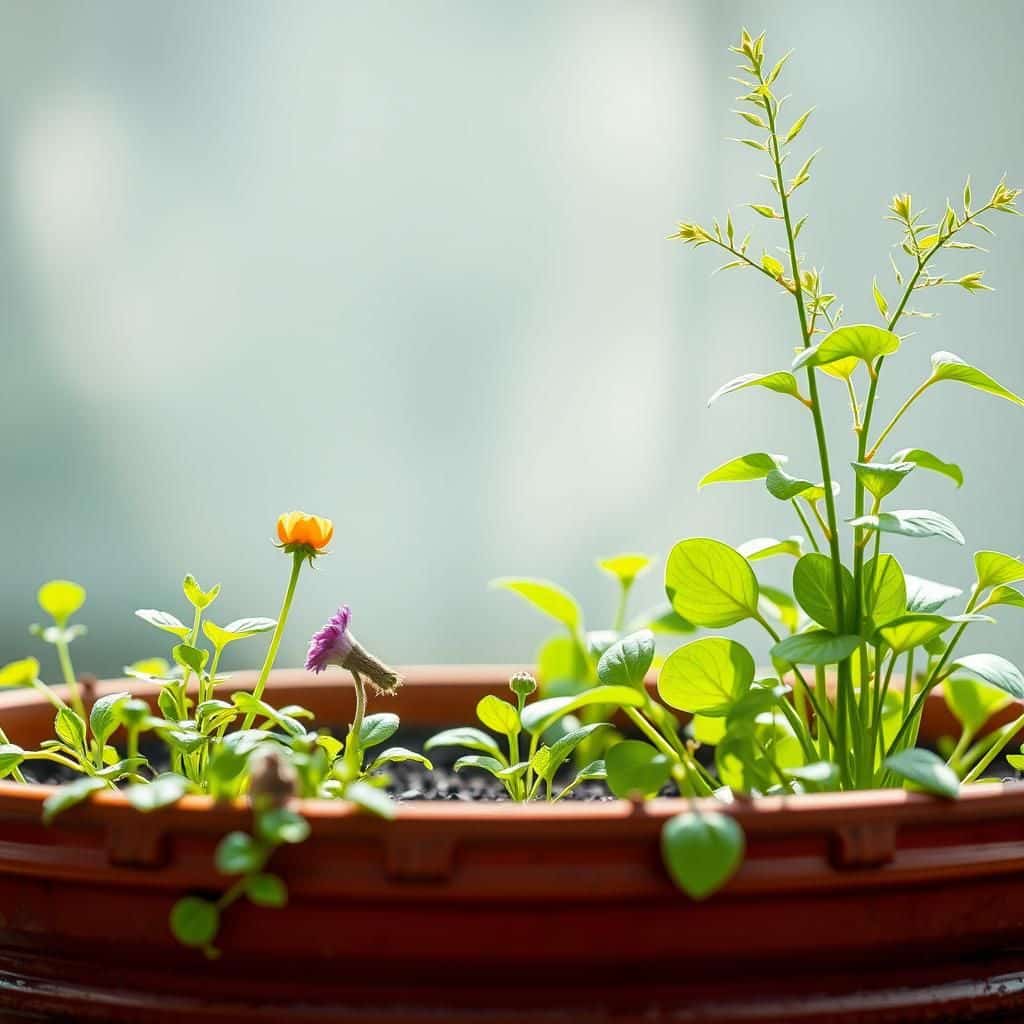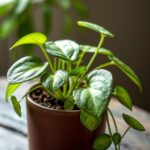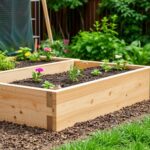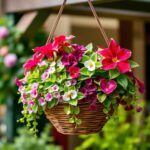What is the best thing to put in the bottom of a large planter? Essential Tips for Optimal Plant Growth

Choosing the right material for the bottom of a large planter is crucial for promoting healthy plant growth. While many gardeners may overlook this aspect, the foundation of your planter can significantly impact drainage, moisture retention, and overall plant health. In this article, we will explore various options to consider, from traditional gravel to innovative solutions like wicking fabric. We will also provide essential tips on layering, appropriate materials, and techniques to maximize the efficiency of your planter. Whether you're growing flowers, herbs, or vegetables, understanding the best practices for the bottom of your planter can lead to thriving plants and bountiful harvests.
What is the best thing to put in the bottom of a large planter?
To maximize the health of your plants and ensure proper drainage, the best thing to put in the bottom of a large planter is a combination of materials that promote drainage while preventing soil loss. A layer of rocks or gravel is commonly recommended as it allows excess water to escape while keeping the soil in place. You can also consider using landscape fabric to prevent soil from mixing with the drainage material. This setup minimizes the risk of root rot caused by excessive moisture, creates a healthy environment for your plants, and contributes to their overall growth by ensuring that nutrients are effectively retained in the soil above.
Benefits of Using Gravel
Using gravel at the bottom of your planter has the significant benefit of enhancing drainage. It enables excess water to flow out more freely, which is crucial in preventing waterlogged soil that can lead to root rot. Additionally, gravel is a less expensive and reusable option for planters, making it an eco-friendly choice when repurposed in different planting projects.
Importance of Drainage Holes
Having drainage holes at the bottom of your large planter is essential for allowing water to escape. Without these holes, any water that collects can result in poor drainage, leading to issues such as root suffocation and fungal diseases. Ensuring your planter has adequate drainage will not only prolong the life of your plants but also help maintain the structural integrity of the planter itself.
Using Landscape Fabric
Landscape fabric serves as an effective barrier that helps in separating your soil from gravel or rocks while allowing water to drain through. This prevents the soil from clogging the drainage layer beneath and ensures that your plants receive proper air circulation around their roots. Utilizing landscape fabric can also support your planting strategy by keeping roots well-aerated and minimizing the risk of soil erosion over time.
See also:
Alternatives to Rocks and Gravel
If you prefer alternatives to rocks and gravel, consider using coconut coir, which is a sustainable option that retains moisture while still allowing for good drainage. Broken pottery or ceramic shards can also be a creative choice, providing both drainage and aesthetic appeal through the visual aspect they add to the planter's base. Additionally, styrofoam peanuts can work as a lightweight filler that promotes drainage and reduces the overall weight of the planter.
Effects of Soil Type on Planter Base
The type of soil you plan to use in your large planter can significantly influence what you should place at the bottom. For example, if you are using a heavy clay soil, adding a layer of gravel or rocks becomes even more critical to ensure that excess moisture does not accumulate. On the other hand, if you’re using a lighter potting mix, you might be able to use a thinner layer of drainage material since these mixes typically promote better drainage on their own.
| Material | Benefit |
|---|---|
| Gravel | Enhances drainage and prevents root rot. |
| Landscape Fabric | Prevents soil erosion while allowing water permeability. |
| Coconut Coir | Retains moisture but still drains well. |
| Broken Pottery | Creates a decorative drainage layer. |
| Styrofoam Peanuts | Lightweight option that promotes drainage. |
Choosing the Right Bottom Layer for Your Large Planter
When selecting the best material to place at the bottom of a large planter, it's essential to consider drainage and aeration. A layer of small stones or gravel can promote adequate drainage, preventing water from pooling and causing root rot. Additionally, using landscape fabric above this layer can help keep the soil from filtering down into the stones, while still allowing for water flow. Alternatively, you might consider utilizing ceramic or terracotta fragments, as they can also enhance drainage and create a balanced environment for your plants. Choosing the right material is vital to create a healthy growing environment, allowing the roots to thrive without excess moisture damaging them.
Benefits of Using Gravel at the Bottom
Using gravel at the bottom of your planter has significant benefits, primarily due to its ability to enhance drainage. It allows excess water to pass through freely, reducing the risk of waterlogged soil, which can lead to root disease. Additionally, the spaces between the gravel facilitate aeration, crucial for the overall health of the plant roots. This layer acts as a buffer, ensuring that the soil above remains adequately moist without becoming oversaturated, thus creating an ideal growing environment.
Why Landscape Fabric is Essential
Landscape fabric serves a critical role in maintaining the health of your plants in a large planter. By placing it above the drainage layer, you prevent soil from leaching into the gravel or stones, which can impede water flow. This fabric allows moisture and air to pass through while keeping the soil contained, promoting optimal growth. Without this barrier, the fine soil can wash away, creating uneven conditions and potentially harming the root system of your plants.
See also:
Alternative Materials: Ceramic Pieces
Incorporating ceramic or terracotta pieces at the bottom of your planter can offer several advantages. These materials are not only durable but also help with drainage and aeration quite effectively. Like gravel, they create spaces for excess water to escape, while their porous nature can absorb moisture, giving plants a slightly more balanced moisture supply. Using this method also adds an aesthetic element to your planter, making it visually appealing while enhancing its functionality.
The Importance of Sizing Your Drainage Layer
When determining the thickness of your drainage layer, it's crucial to find a balance that optimally functions for your specific plant needs. A layer that is too thick may reduce the total soil volume available for root development, whereas a too-thin layer might not provide sufficient drainage. A general recommendation is to use a thickness of 2-4 inches, depending on the size of the planter and the type of plants being grown. This ensures that your plants have enough soil for nutrient uptake while maintaining proper drainage.
Considering the Plant Type and Environment
Every plant species has its own specific requirements regarding water and nutrients. Therefore, it’s imperative to consider the type of plants you plan to grow when deciding what to place at the bottom of your large planter. For instance, plants that thrive in wet environments may need less drainage material, while succulents and cacti, which prefer drier conditions, benefit greatly from an extensive drainage layer. Additionally, consider the climate and local weather conditions, as these factors will influence how quickly water evaporates and how saturated the soil can become. Understanding these dynamics will help ensure the right setup for successful growing conditions.
Questions from Our Readers
What should I put at the bottom of a large planter for drainage?
To ensure proper drainage in a large planter, it's recommended to place rocks, gravel, or broken pottery at the bottom. These materials allow excess water to escape while preventing soil from blocking drainage holes, which helps to keep your plants healthy.
Can I use Styrofoam as a filler in the bottom of my planter?
Yes, using Styrofoam as a filler is a popular option for large planters. It helps reduce the amount of soil needed while providing good drainage; however, make sure to cover it with landscaping fabric to prevent soil from washing through.
See also:
Is it beneficial to add organic material at the bottom of the planter?
Adding organic material such as compost or mulch at the bottom of the planter can be beneficial as it improves soil aeration and provides essential nutrients over time. Just ensure it does not obstruct drainage.
How important is it to include a barrier in the planter bottom?
Including a barrier, such as landscaping fabric, at the bottom of your planter is important as it prevents soil from escaping while still allowing water to drain. This helps maintain a healthy environment for your plants and enhances their growth.

If you want to read more articles like What is the best thing to put in the bottom of a large planter? Essential Tips for Optimal Plant Growth, we recommend you check out our Planter category.
Leave a Reply
Related Articles